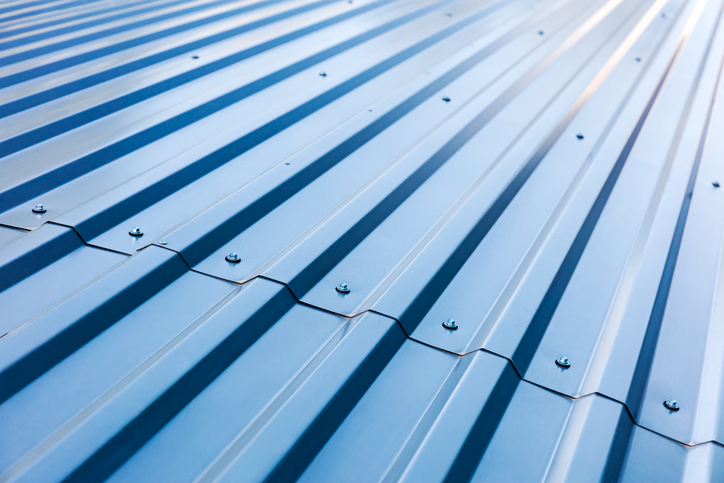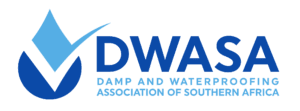Industrial Roof Maintenance normally includes the repair, rust treatment, waterproofing and possibly painting of metal sheet roof profiles such as IBR, Corrugated and Klip-lok. Occasionally, depending on the facility you’re maintaining there may even be the odd Concrete Roof to service and waterproof.
We, at Dampcon, can assist in all your roof, box gutter and side cladding maintenance requirements. Feel free to reach out to us for expert advise on a solution to meet your needs and your budget.
More information is available on www.dampcon.com/home for a full list of our industrial / commercial roof service offerings, or click on the links below for the related service pages:
– https://dampcon.com/roof-maintenance/
– https://dampcon.com/box-gutters/
– https://dampcon.com/roof-waterproofing/
– https://dampcon.com/facility-maintenance/
Next time you’re looking into your Industrial Roof Maintenance be sure to ask the following questions:
Is your contractor equipped to work at heights safely and are they correctly insured do they have the statutory safety requirements in place
This is fairly straight forward and any contractor who repeatedly works in this environment should have this available. Obviously a site specific risk assessment would be required to identify hazards and risks, which are then best minimised before works begin. Safety lines with the related safety gear, training, documentation and supervision are always a preferred method of risk minimisation, but depending on the structure, may not be the only method to safely work in the area. One of our specialised technical representatives can assist in determining the best method to access and work on your roof.
When replacing / securing sheeting – where do you insert the fasteners?
The answer is always through castles / narrow flute / crest where applicable in the case of IBR and Corrugated roof sheet profiles. Do not allow anyone to install fasteners in the valleys of your roof sheets as the valleys carry the water off the roof. This is especially prevalent and easy to miss when one installs a board and torch system over metal sheet roofs. Lately, we have also noted a tendency of some installers to use a thinner gauge roof sheet, presumably to reduce costs, and then over tighten the fasteners.
When installing polycarbonate sheeting, what type of washer do you use?
There is a specific TPE / EPDM washer designed for this purpose which along with flanged screws, both seals and helps limit the sheet damage caused by over tightening. Although galvanised bonded foam washers will suffice, they’re not the best available for this application
What types of products are you using, where and are they fit for purpose?
Ensure that each product is matched to the application required and is fit for purpose. There has been a lot of hype around many of the Liquid Rubber type waterproofing products and coatings. In our experience we have found that most of the products currently marketed are actually an acrylic type product and not rubber as the name suggests.
Also important is ensuring that the correct thickness of coating is applied. This becomes more of an issue when using spray application as opposed to traditional brush and roller. Both methods of application have their merits and the choice should be dependant on the requirements of your site. Lastly it is important to note that products used on your roofs should be calibrated for South African UV conditions. We have seen a trend where imported products can not necessarily handle the UV rays experienced in sunny SA.
Quotes and Guarantees – what are the tangibles and intangibles?
Unfortunately, it is easy for some contractors to offer a quote with an amazing guarantee to get a sale. Then look for ways to get out of it when you have a valid claim within the guarantee period.
The tangibles (The “What, When, How & Why”) include the terms and conditions attached to the quote and guarantee. It’s worth a read and any contractor should be able to offer a reasonable explanation for any term you may be unclear on. Additionally, what is the companies track record?
The intangibles (The “Who”) should answer the question: Do you trust that this company, and the people within it, will stay committed to the project through the full guarantee period? It has more to do with who you are contracting with, the culture and moral compass of the people within the roof maintenance company. What is their track record through difficult jobs? Do they stay committed or look fo a way out? Are they open and transparent?
Is your contractor dealing with rust correctly?
There is a difference in approach when dealing with Rust Prevention vs Rust Treatment and this is a key component of industrial roof maintenance. Red oxide and the like are designed for rust prevention and are not to be applied over surfaces that have begin to oxidise. One you have noticed rust forming on roof sheet the approach need to change to Rust Treatment. This normally requires the removal of excess rust and then the application of a Rust Conversion Primer before normal re-coating could continue.
P.S. The stock image selected for this article was chosen intentionally with a sense of the irony. I hope you have all, after reading this, noted the incorrect location of the fasteners…





